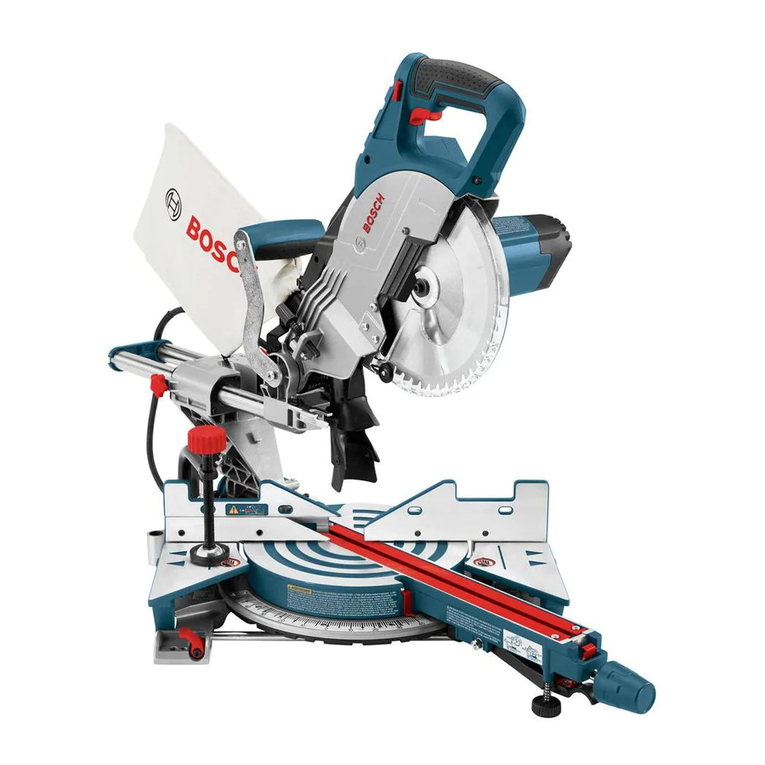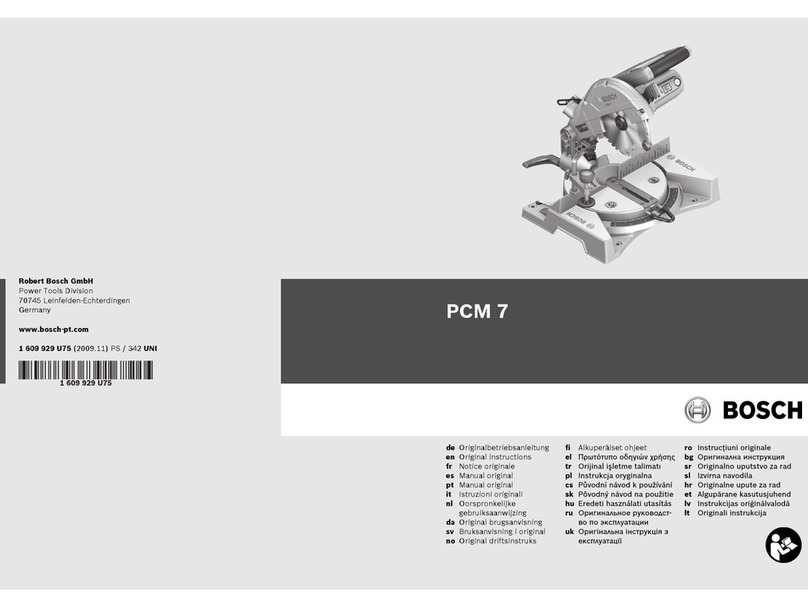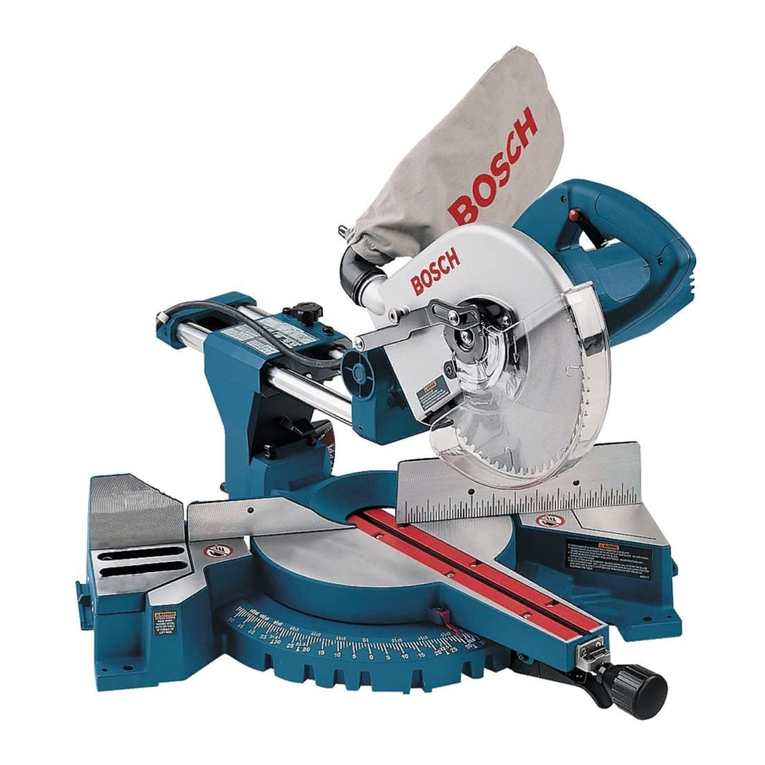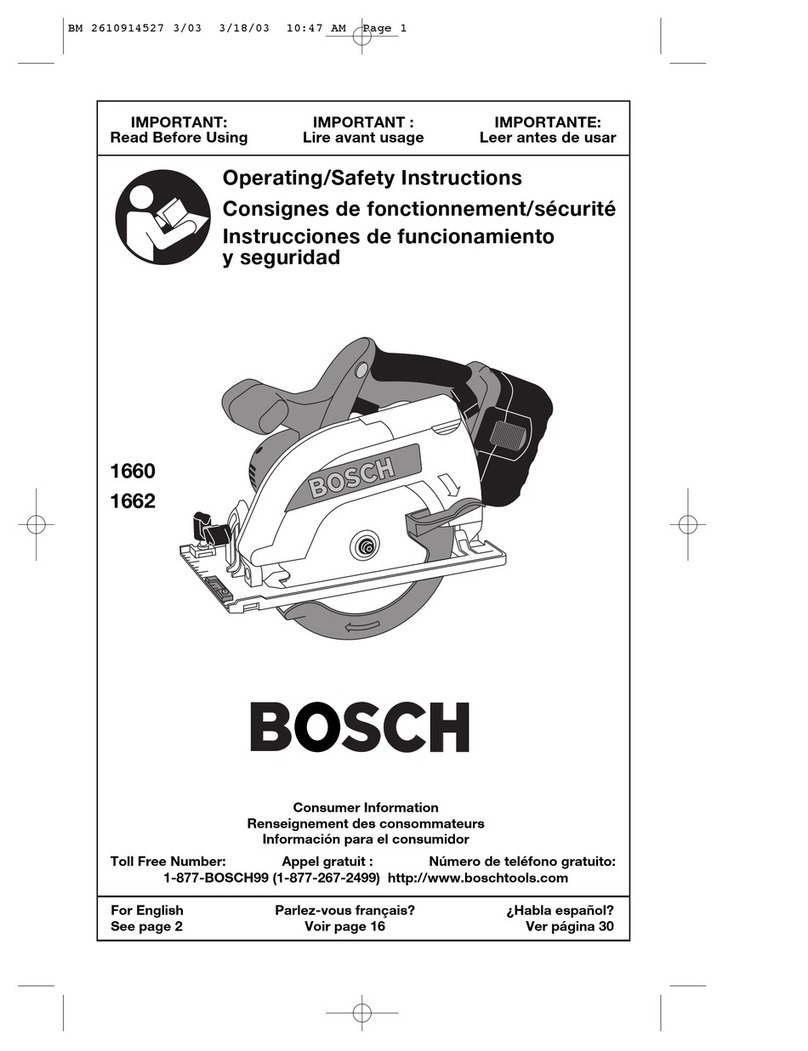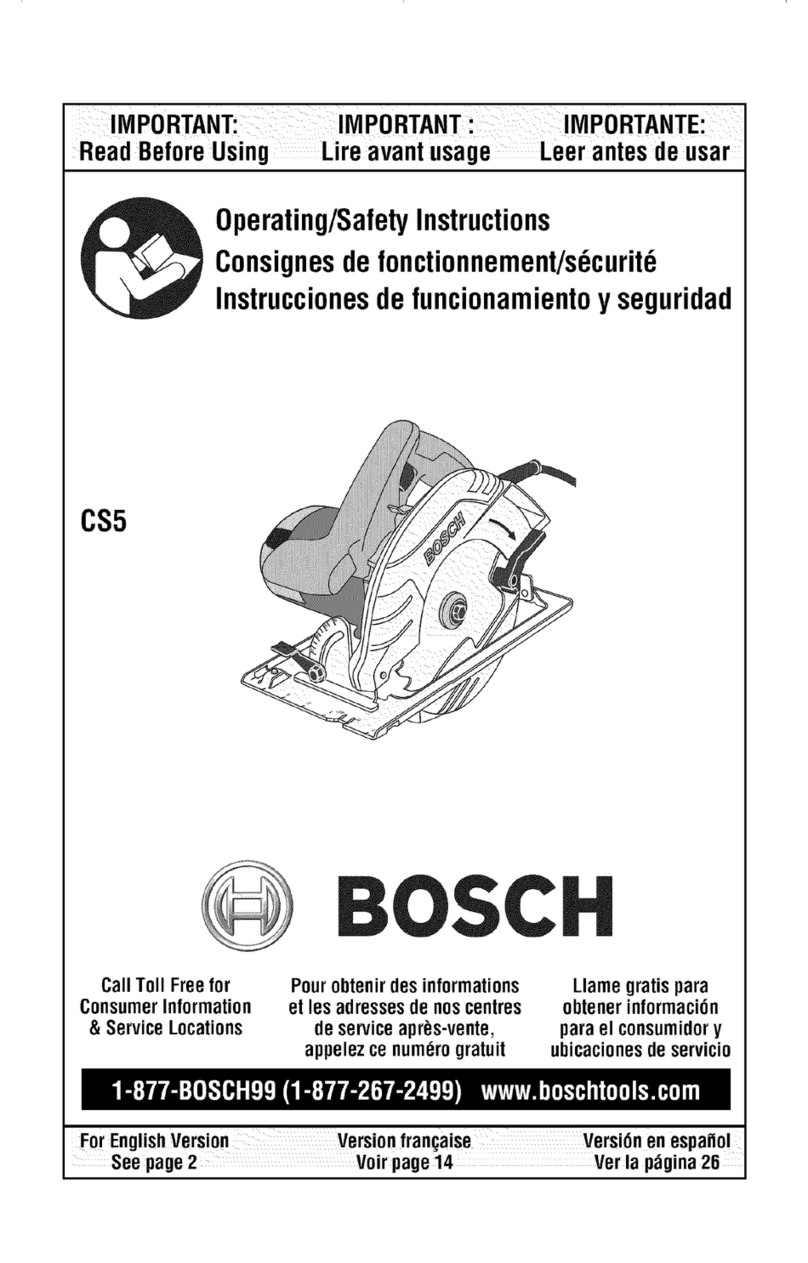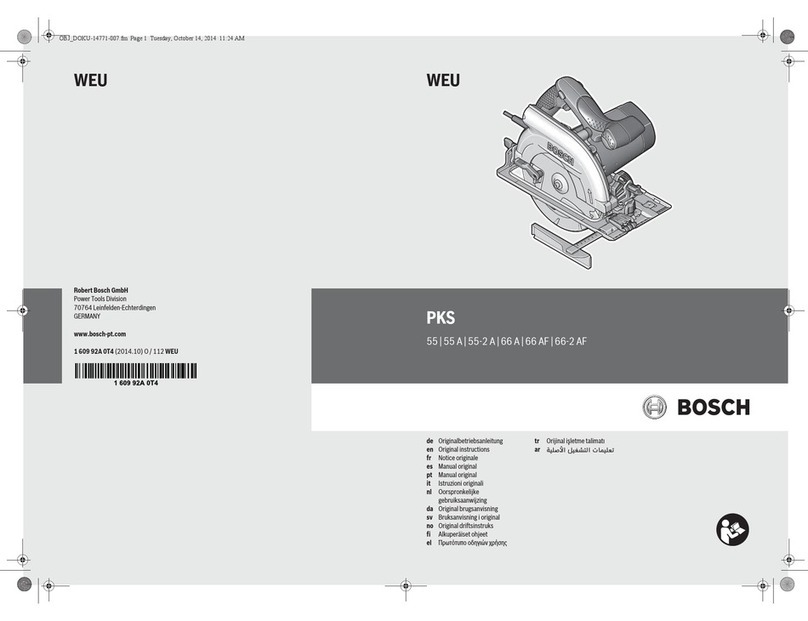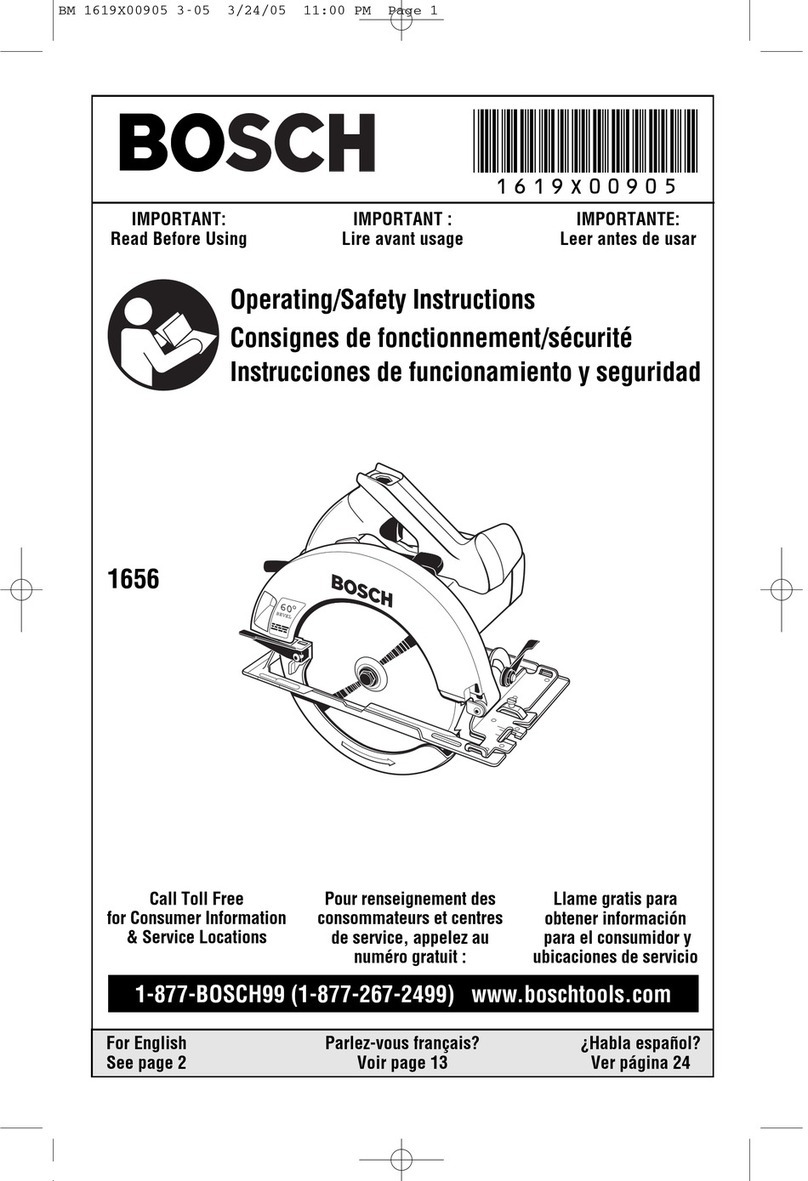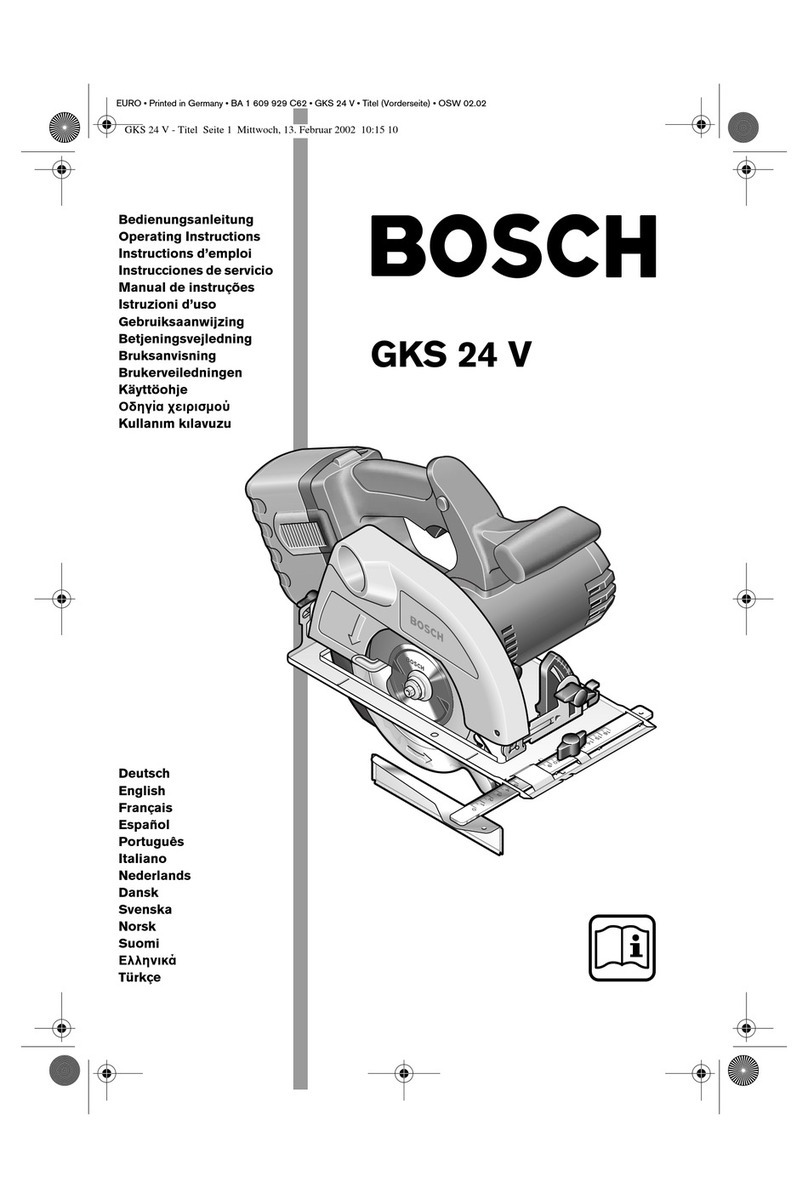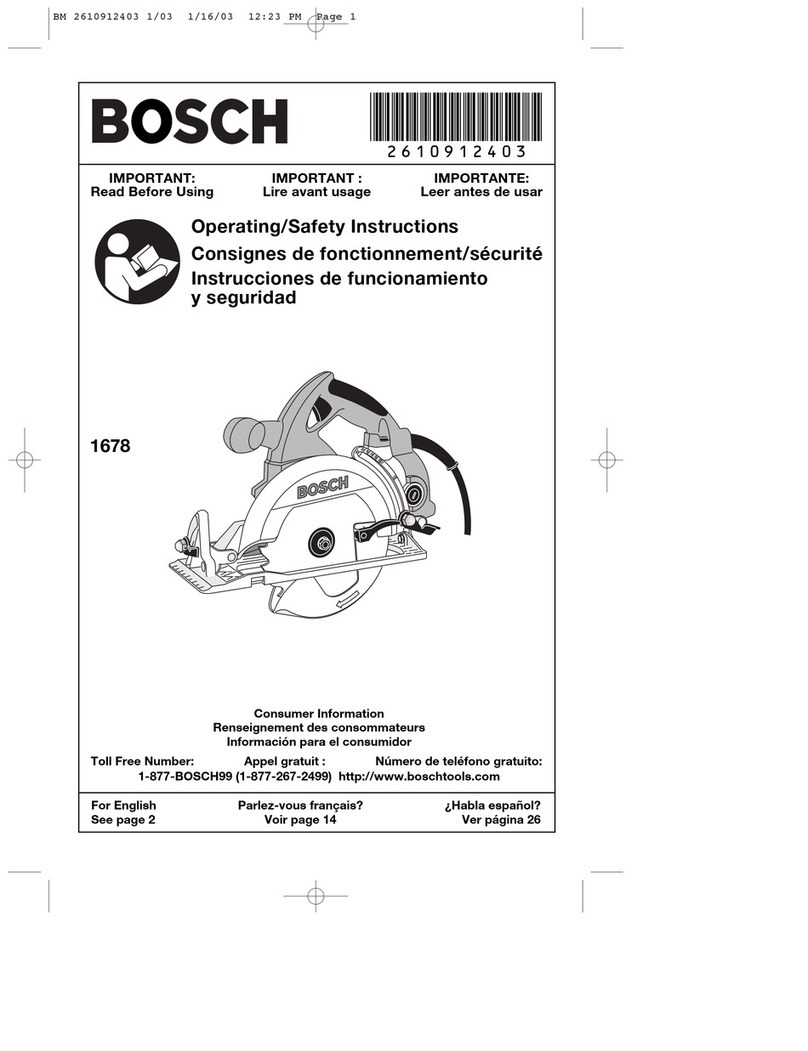
10 | English
uKeep cutting tools sharp and clean. Properly main-
tained cutting tools with sharp cutting edges are less
likely to bind and are easier to control.
uUse the power tool, accessories and tool bits etc. in
accordance with these instructions, taking into ac-
count the working conditions and the work to be per-
formed. Use of the power tool for operations different
from those intended could result in a hazardous situation.
uKeep handles and grasping surfaces dry, clean and
free from oil and grease. Slippery handles and grasping
surfaces do not allow for safe handling and control of the
tool in unexpected situations.
Service
uHave your power tool serviced by a qualified repair
person using only identical replacement parts. This
will ensure that the safety of the power tool is maintained.
Safety Instructions for Metal Cutting Saws
uThe rated speed of the accessory must be at least
equal to the maximum speed marked on the power
tool. Accessories running faster than their rated speed
can break and fly apart.
uThe outside diameter and the thickness of your ac-
cessory must be within the capacity rating of your
power tool. Incorrectly sized accessories cannot be ad-
equately guarded or controlled.
uWear personal protective equipment. Depending on
application, use face shield, safety goggles or safety
glasses. As appropriate, wear dust mask, hearing pro-
tectors, gloves and shop apron capable of stopping
small abrasive or workpiece fragments. The eye pro-
tection must be capable of stopping flying debris gener-
ated by various operations. The dust mask or respirator
must be capable of filtrating particles generated by your
operation. Prolonged exposure to high intensity noise
may cause hearing loss.
uKeep bystanders a safe distance away from work area.
Anyone entering the work area must wear personal
protective equipment. Fragments of workpiece or of a
broken saw blade may fly away and cause injury beyond
immediate area of operation.
uPosition the cord clear of the spinning accessory. If
you lose control, the cord may be cut or snagged and your
hand or arm may be pulled into the spinning saw blade.
uRegularly clean the power tool’s air vents. The motor’s
fan can draw the dust inside the housing and excessive
accumulation of powdered metal may cause electrical
hazards.
uDo not operate the power tool near flammable materi-
als. Do not operate the power tool while placed on a
combustible surface such as wood. Sparks could ignite
these materials.
uDo not use accessories that require liquid coolants.
Using water or other liquid coolants may result in electro-
cution or shock.
uAlways use undamaged saw blade flanges that are of
correct diameter for your selected saw blade. Proper
saw blade flanges support the saw blade thus reducing
the possibility of saw blade breakage.
uThe arbour size of saw blades and flanges must prop-
erly fit the spindle of the power tool. Saw blades and
flanges with arbour holes that do not match the mounting
hardware of the power tool will run out of balance, vibrate
excessively and may cause loss of control.
uDo not use damaged saw blades. Before each use, in-
spect the saw blades for chips and cracks. If the
power tool or saw blade is dropped, inspect for dam-
age or install an undamaged saw blade. After inspect-
ing and installing the saw blade, position yourself and
bystanders away from the plane of the rotating saw
blade and run the power tool at maximum no load
speed for one minute. Damaged saw blades will nor-
mally break apart during this test time.
Kickback and related warnings
Kickback is a sudden reaction to a pinched or snagged rotat-
ing saw blade. Pinching or snagging causes rapid stalling of
the rotating saw blade which in turn causes the uncontrolled
cutting unit to be forced upwards toward the operator.
For example, if a saw blade is snagged or pinched by the
workpiece, the edge of the saw blade that is entering into the
pinch point can dig into the surface of the material causing
the saw blade to climb out or kick out. Saw blades may also
break under these conditions.
Kickback is the result of power tool misuse and/or incorrect
operating procedures or conditions and can be avoided by
taking proper precautions as given below.
uMaintain a firm grip on the power tool and position
your body and arm to allow you to resist kickback
forces. The operator can control upward kickback forces,
if proper precautions are taken.
uDo not position your body in line with the rotating saw
blade. If kickback occurs, it will propel the cutting unit
upwards toward the operator.
uDo not attach a saw chain, woodcarving blade or seg-
mented diamond wheel with a peripheral gap greater
than 10 mm. Such blades create frequent kickback and
loss of control.
uDo not “jam” the saw blade or apply excessive pres-
sure. Do not attempt to make an excessive depth of
cut. Overstressing the saw blade increases the loading
and susceptibility to twisting or binding of the saw blade
in the cut and the possibility of kickback or saw blade
breakage.
uWhen the saw blade is binding or when interrupting a
cut for any reason, switch off the power tool and hold
the cutting unit motionless until the saw blade comes
to a complete stop. Never attempt to remove the saw
blade from the cut while the saw blade is in motion
otherwise kickback may occur. Investigate and take
corrective action to eliminate the cause of saw blade
binding.
1 609 92A 59S | (09.07.2019) Bosch Power Tools



